


MUTINY ON THE BOUNTY -
xxxxxThe mutiny aboard HMS Bounty occurred in April 1789, when members of the crew, led by the mate Fletcher Christian (1764-
Acknowledgements
Mutiny: hand coloured aquatint by the British marine artist Robert Dodd (1748-
Including:
William Bligh
and
Fletcher Christian

x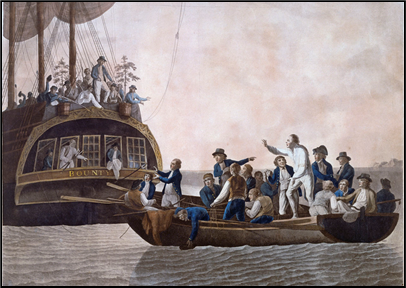 xxxxIt was in 1787 that captain William Bligh (1754-
xxxxIt was in 1787 that captain William Bligh (1754-
xxxxxThe causes of the mutiny remain unclear to this day. The mutineers claimed that his rule had been unacceptably harsh, whereas Bligh argued that the men simply wanted to jump ship in order to return to the good life on Tahiti, especially as some had made “female connections”. It is certainly true that Bligh had a rough tongue, and had insulted many of his officers. This, plus his overbearing manner, made him disliked by his crew. And later in his career he was indeed arrested for “oppressive behaviour”, but there is no evidence to suggest that, given the standards of the day, his rule was unduly harsh aboard the Bounty.
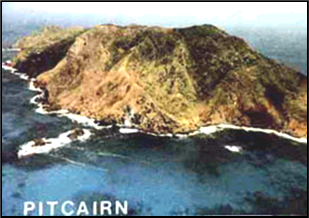
xxxxxCast adrift in an open boat with only a compass and water and food for five days, the small party suffered extreme hardship. However, Bligh showed remarkable skill as a navigator, and, after an incredible voyage of some 3,600 miles, the small party eventually reached Timor in the East Indies in June 1789. As for the mutineers, Christian and eight others, together with a number of Tahitians (including his future wife Mauatua) took The Bounty to Pitcairn Island. There they made a settlement and remained undiscovered until 1808, by which time all but one of the crew, John Adams, were dead. According to Adams, the party landed on the island in 1790, and at once stripped and burned the Bounty. They then began to quarrel amongst themselves, and with the Tahitians, and in the fighting that followed all his fellow crewmen, including Christian, were killed -
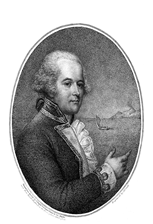 xxxxxOn returning home, Bligh resumed his career and did well for himself despite the celebrated mutiny at sea. He continued transporting breadfruit trees to the West Indies, and in 1797, as commander of The Director, was put ashore when his crew joined the Nore Mutiny. As a ship’s captain he showed courage and good seamanship at the Battle of Camperdown that year, and again at Copenhagen four years later. In 1805 he was appointed governor of New South Wales in Australia -
xxxxxOn returning home, Bligh resumed his career and did well for himself despite the celebrated mutiny at sea. He continued transporting breadfruit trees to the West Indies, and in 1797, as commander of The Director, was put ashore when his crew joined the Nore Mutiny. As a ship’s captain he showed courage and good seamanship at the Battle of Camperdown that year, and again at Copenhagen four years later. In 1805 he was appointed governor of New South Wales in Australia -
xxxxxIncidentally, Bligh was born in Cornwall, England, in 1754, and went to sea as a cabin boy at the age of seven. He joined the Royal Navy in 1770, and six years later was sailing master of the Resolution on Captain Cook’s third and final voyage to the South Seas. He returned in 1780, and seven years later took part in his eventful voyage to Tahiti. He died in London in 1817. ……
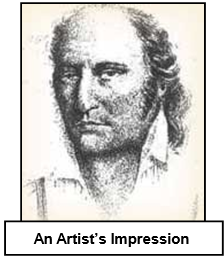 xxxxx…… Fletcher Christian was born near Cockermouth, Cumberland (now Cumbria), England in 1764, and had served some years in the navy before becoming master’s mate on HMS Bounty. As noted above, according to John Adams, the sole survivor of the mutineers who settled on Pitcairn, Christian was killed in a fracas around 1791. But there is another story going the rounds, and a much more romantic one. This holds that Christian did survive on the island, and that in 1808 he escaped to England on a ship commanded by a Captain Folger. Here, so some maintained, he secretly visited his relatives in Cumberland, and was seen on the streets of Devonport, near Plymouth! The illustration here is an artist’s impression. ……
xxxxx…… Fletcher Christian was born near Cockermouth, Cumberland (now Cumbria), England in 1764, and had served some years in the navy before becoming master’s mate on HMS Bounty. As noted above, according to John Adams, the sole survivor of the mutineers who settled on Pitcairn, Christian was killed in a fracas around 1791. But there is another story going the rounds, and a much more romantic one. This holds that Christian did survive on the island, and that in 1808 he escaped to England on a ship commanded by a Captain Folger. Here, so some maintained, he secretly visited his relatives in Cumberland, and was seen on the streets of Devonport, near Plymouth! The illustration here is an artist’s impression. ……
xxxxx…… Descendants of the mutineers still live on Pitcairn, but at one time they became too numerous for the island, and in 1856 some were resettled on Norfolk Island off the east coast of Australia. ……
xxxxx…… The mutiny on the Bounty was the subject of a poem entitled The Island, written by the nineteenth century English poet Lord Byron, and of a book Mutiny on the Bounty, published in 1932 by the American writers Charles Nordhoff and James Hall. Needless to say, a number of motion pictures have been produced dramatising the event. ……

xxxxx…… The twist in the tailpiece is that the breadfruit trees were eventually planted in the West Indies, but the slaves objected to the taste of the fruit and would not eat it! ……
xxxxx…… In 2004 a ship’s log came to light which recorded another mutiny at 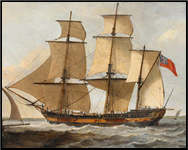 sea, six years after the incident on the Bounty. It occurred on the Marquis Cornwallis, a convict ship sailing from Cork in Ireland to Botany Bay in Australia. It had 244 prisoners aboard and, a month into the voyage, the captain, Michael Hogan, was informed that about 50 of the convicts and their guards were planning to take over the ship and sail to America. When trouble broke out, a party, led by the captain, shot seven of the rebels and had the ringleader flogged to death. Hogan was later accused of “inhuman treatment”, but was eventually cleared of all charges. The log, which includes a map and a painting of the ship, was kept by Hogan’s family until sold to a private collector in the 1980s. He put it up for auction in 2004.
sea, six years after the incident on the Bounty. It occurred on the Marquis Cornwallis, a convict ship sailing from Cork in Ireland to Botany Bay in Australia. It had 244 prisoners aboard and, a month into the voyage, the captain, Michael Hogan, was informed that about 50 of the convicts and their guards were planning to take over the ship and sail to America. When trouble broke out, a party, led by the captain, shot seven of the rebels and had the ringleader flogged to death. Hogan was later accused of “inhuman treatment”, but was eventually cleared of all charges. The log, which includes a map and a painting of the ship, was kept by Hogan’s family until sold to a private collector in the 1980s. He put it up for auction in 2004.
G3b-


